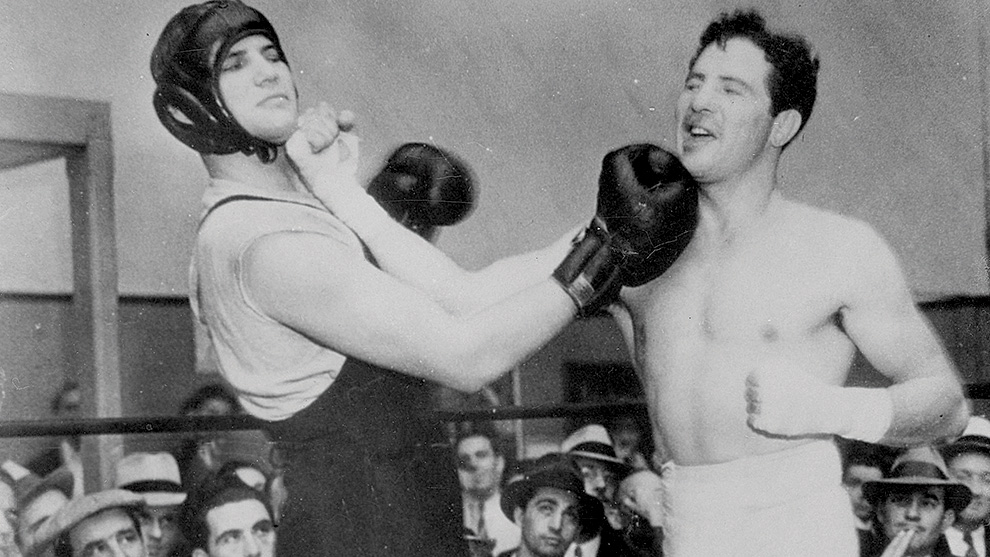MAX BAER was one of the most colourful of all heavyweight champions. He was a devastating puncher and his rise to the title during the years 1930 to 1934 showed him at his best. In 1935 he lost out to Jimmy Braddock in a huge upset in a title defence before being destroyed by Joe Louis three months later.
By 1936 he was pretty much spent, but still a big enough name to make some decent money, and so in 1937 he ventured across to the UK to take on Tommy Farr in what was to be Farr’s second to last contest before his title challenge with Louis. Farr beat the American over the full 15 at Harringay Arena thereby adding another nail to Baer’s fistic coffin. He then knocked out Walter Neusel in three to set up the title bout with Louis.
Amongst Baer’s retinue of sparring partners for this contest was his younger brother Buddy, who, at 21 was six years younger than his brother. Buddy turned pro in 1934 and by the time he arrived in the UK in April 1937 he had had 48 professional contests with only three losses. Forty-one of these had ended by KO victory, and so Buddy was some puncher.
After watching his brother lose out to Farr, Buddy remained in the UK throughout May and took part in two contests against up-and-coming British heavyweight prospects, and this got our pressmen very excited. As is widely known, Baer eventually challenged Louis in 1941 and he succeeded in dumping the great champion onto the canvas in the very first round. Eventually Baer ran out of steam, and he was disqualified after being floored three times in the sixth. In a rematch the following year he lasted only one round and he never fought again.
His two British contests took place within 18 days in May 1937. The first one was against Jim Wilde of Swansea, and it took place at Harringay Arena, with the bout being a joint top-of-the-bill affair alongside Petey Sarron v Dave Crowley. Many people confuse the Swansea fighter with the world flyweight champion Jimmy Wilde of Tylorstown. Despite having the same name, the two men could not have been more different. Jim would have considerably outweighed Jimmy, even if there were two versions of Jimmy standing on the same scales.
BN reported that “If Buddy Baer can beat Wilde decisively he will have accomplished what has been beyond the powers of most British heavyweights, and will have made a decisive step towards getting a contest with the best men available in England. Heavyweights have been very shy in coming forward to act as sparring partners to Buddy, whose reputation as a punishing hitter had obviously been spread around.”
In the event, Baer wore the Welshman down and finally stopped him in the fourth round after having him down twice in the first. This was just the sort of start that he needed in British rings and he was soon matched with Jack London of West Hartlepool in a bout that took place at the Vetch Field, the home of Swansea football club. It seems odd that he fought London at this venue and not Wilde, who was a native of the town.
The attendance was huge despite there being no Welshman at the top of the bill and, once again, Baer started brightly, dumping London with a heavy right hand almost as soon as the first round had started. A smashing right uppercut soon had him back on the floor and it seemed unlikely that he would last out the round. Jack was made of stern stuff however, and despite being floored again in the second, he lasted the full 10 rounds and was carried to his dressing room by an appreciative crowd. Buddy had learned that Britain had some good, tough heavyweights, before sailing back to the States to resume his career.
